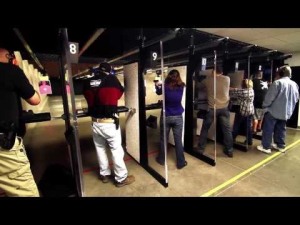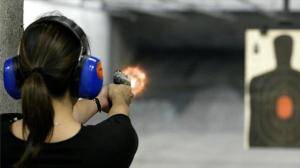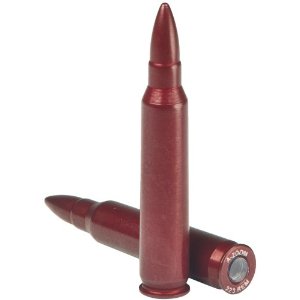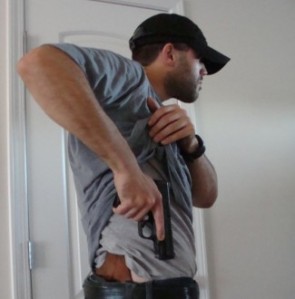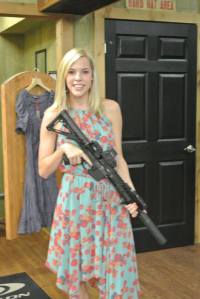Gun ammunition is not cheap, but the non-practice of self-defense encourages terrible consequences within the foreseeable future.
If we own guns, we all must do some live firing gun practice. At home snap cap use, or dummy round practice, is important too. Yet, live fire does not hide our flaws when shooting, and we all have them.
Live fire also exposes our deficiencies in gun safety, the handling of firearms and the proper cleaning of weapons. Even when our weapons jam, live fire will put our knowledge of tap, rack, reload, and if that doesn’t work: safety, lock, release, into action. The only way we can zero in our rifle sights for better shooting accuracy is with live firing.
An important truth to live firing is that it is better to go alone, then join a group of unknown shooters, even if the live fire outing was the idea of a friend of a friend. Doing live fire with annoying ‘gun dudes,’ and a lot of them are out there, can make a fun day of shooting into an experience of pure suffering.
You are still shooting live rounds – which can destroy human life within seconds. Do not risk your personal safety, nor your personal freedom, by visiting a live fire range with other unknown shooters. Even good friendships can strain when going out for a day of live fire shooting.
One time in the distant past, I remember going out live fire shooting in the desert with a bunch of guys who I did not know beforehand. While it was my turn to fire, a good shooter commented to me on my lack of hitting the target, and he showed me some good gun handling pointers, which made my accuracy a lot better.
Live fire shooting at the range is necessary for becoming a better marksman. It is expensive, loud and messy, but all shooters must practice at the range. The well-practiced range shooter will also know how to deal with gun jams, misfires, using good ammunition versus the cheap crap loads, and how to parlay cover tactics when firing shots at the enemy. Live firing is also the ideal spot to test out newly purchased rifles and pistols.
Live firing is basically a solo practice in order to improve accuracy and gun handling. The range should not become a social event however, nor should any alcohol or drug use enter into the activities.
Live fire shooting must adhere to the strictest practices within gun safety protocols.
Before driving to the range, the shooter needs to purchase lots of ammunition for the weapons. Regular ammunition loads are sufficient. Shooters should avoid unknown ammunition or bullets recently reloaded from untrusted shooters. Reloaded rounds work well when offered from proven experts who use reloading procedures, or when purchased from experienced gunsmiths.
The shooter must possess both ear plugs and ear headphones. Another time I went shooting, I remember having to cover my ears every time this guy shot his 308. I was only wearing cheap ear plugs.
The other required safety equipment includes safety glasses, and if it is a very sunny day, sun glasses. All shooters must wear hats, (baseball caps are good), for when the bullet brass or steel kicks back to the head – which it always does.
When at the shooting bays, shooters always point their weapons’ barrels down range, or when not shooting, the weapon barrels lie either facing up or down on the rifle racks. Remember, all guns are loaded.
The most important safety procedure at the range is never firing until every person at the bay says it is OK. Before live firing, each shooter has to make sure that the others are also shooting their weapons. Once a shooter signals to the other range people that he needs to post, check or remove a target, then all the other shooters must stop shooting and remove their weapons facing down range.
Shooters should also remember that firing hundreds of rounds of ammunition can lead to overheating of the barrel and the chamber bore. It is important to rest one rifle or pistol after shooting many rounds, and then practice with other weapons. Most shooters bring at least the majority of their weapons to the range in order to practice as much as possible.
Marksmen can also practice ducking for cover and then shooting, moving and shooting, and shooting from the hip, kneeling, or standing, or even lying in the prone shooter position. All of these tactics make for better gun handling. Regular practice and good effort work. The most important part is actually getting to the place for gun shooting. Whether it is target practice, the indoor pistol range, or just plinking in the desert destroying old televisions, practicing increases gun skill.
After live fire shooting, the gun practitioners need to take a shower, wash their clothes and clean their firearms. One of the negatives of live firing is the amount of lead residues on the clothes, body and hair, after all of the gunpowder found inside the rounds.
Some shooters like to clean their weapons while on the range right after shooting. I do not like this method because disassembly and reassembly of weapons can turn into a messy assignment. What if that small pin of my rifle falls into the sand or dust? What if I try to remove a gun piece and there is still a round in the chamber, or I had forgotten to remove the magazine? I do not want to risk any negligent discharges at the gun range.
Live fire range shooting represents the finality of practice transformed into the role of action. Every time we live fire our weapons, they become more familiar and more personal to our hands, bodies and minds. Eventually, our weapons will become extensions of our arms, hand, eyes – and our minds.
